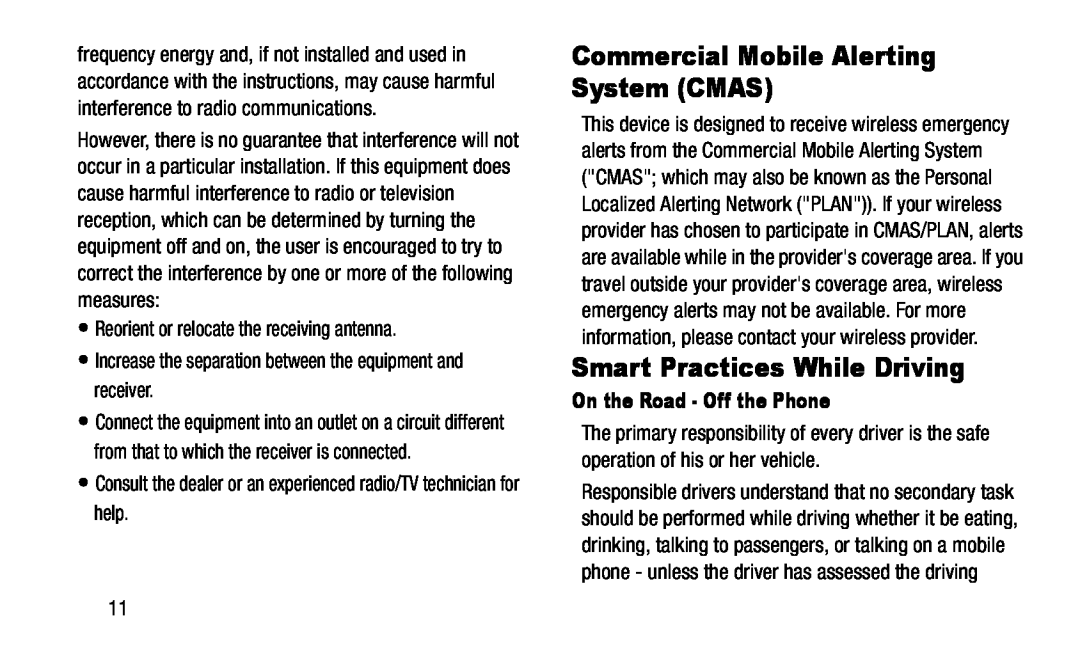frequency energy and, if not installed and used in accordance with the instructions, may cause harmful interference to radio communications.
However, there is no guarantee that interference will not occur in a particular installation. If this equipment does cause harmful interference to radio or television reception, which can be determined by turning the equipment off and on, the user is encouraged to try to correct the interference by one or more of the following measures:
•Reorient or relocate the receiving antenna.
•Increase the separation between the equipment and receiver.
•Connect the equipment into an outlet on a circuit different from that to which the receiver is connected.
•Consult the dealer or an experienced radio/TV technician for help.
Commercial Mobile Alerting System (CMAS)
This device is designed to receive wireless emergency alerts from the Commercial Mobile Alerting System ("CMAS"; which may also be known as the Personal Localized Alerting Network ("PLAN")). If your wireless provider has chosen to participate in CMAS/PLAN, alerts are available while in the provider's coverage area. If you travel outside your provider's coverage area, wireless emergency alerts may not be available. For more information, please contact your wireless provider.
Smart Practices While Driving
On the Road - Off the Phone
The primary responsibility of every driver is the safe operation of his or her vehicle.
Responsible drivers understand that no secondary task should be performed while driving whether it be eating, drinking, talking to passengers, or talking on a mobile phone - unless the driver has assessed the driving
11
